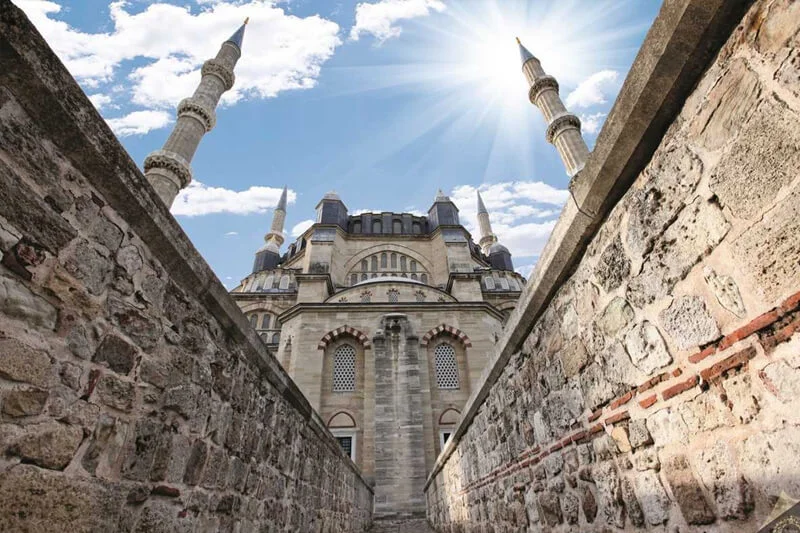The Selimiye Mosque, also known as the Selimiye Camii, is a magnificent Ottoman-era mosque located in Edirne, Turkey. It is considered one of the masterpieces of Ottoman architecture and is a UNESCO World Heritage Site.
The Selimiye Mosque was built between 1569 and 1575 during the reign of Sultan Selim II, after whom it is named. It was designed by the renowned Ottoman architect Mimar Sinan, who is considered one of the greatest architects of the Islamic world. The mosque stands as a symbol of the Ottoman Empire’s cultural and architectural achievements.
The Selimiye Mosque is celebrated for its harmonious and innovative architectural design. It features a central dome with a diameter of 31.3 meters (103 feet), making it one of the largest domes in the world. The dome is supported by four massive piers and is surrounded by semi-domes and smaller domes, creating a breathtaking interior space. The exterior of the mosque is adorned with intricate stone carvings and decorative elements.
The interior of the Selimiye Mosque is equally stunning. The main prayer hall is spacious and well-lit, with large windows allowing natural light to filter in. The walls are decorated with beautiful calligraphy, floral motifs, and geometric patterns. The mihrab (prayer niche) and minbar (pulpit) are exquisitely carved and embellished with intricate details.
The Selimiye Mosque is notable for its tall and elegant minarets. It has four minarets, each reaching a height of 71 meters (233 feet). The minarets are adorned with balconies and decorative elements, showcasing the mastery of Ottoman architectural craftsmanship. The Selimiye Mosque was inscribed as a UNESCO World Heritage Site in 2011 as part of the “Historic Areas of Istanbul and Edirne.” It is recognized for its exceptional universal value, architectural brilliance, and cultural significance.


Comment (0)